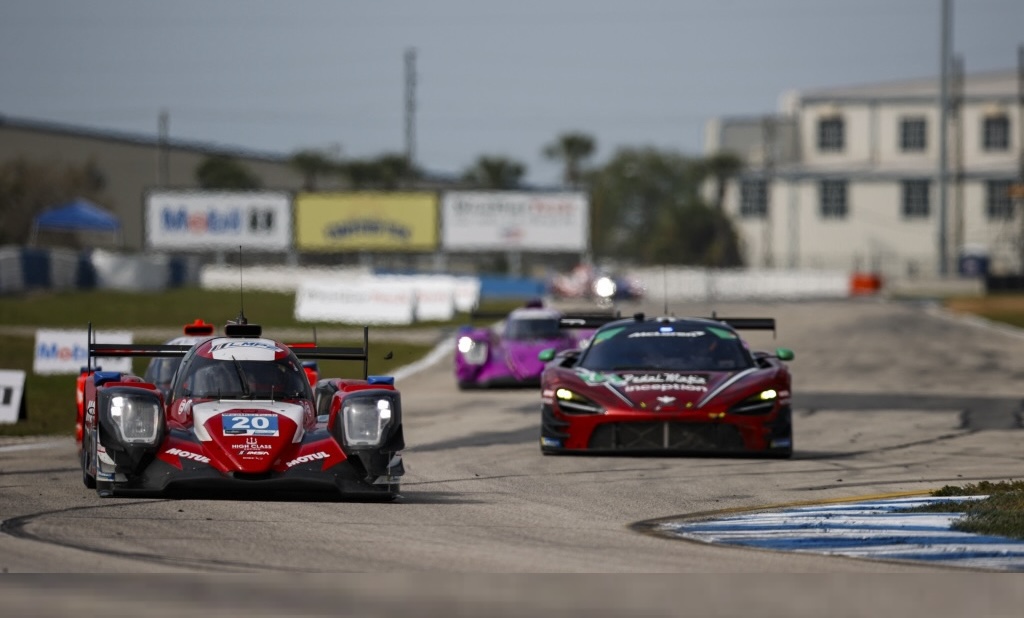All Corvettes moved to the back
All four Chevrolet Corvette Z06 GT3.Rs in the field for the Mobil 1 Twelve Hours of Sebring Presented by Cadillac — the two GTD PRO entries from Corvette Racing by Pratt Miller Motorsports and the GTD cars entered by AWA — have been moved to the back of their respective fields. The particular rule cited in the penalties was, “The original, As-Homologated Configuration of the Car Model must not be modified unless permitted by these Technical Regulations.”
Corvette Racing accepted the penalty and provided an explanation:
“The four Corvettes that qualified Friday at Sebring were equipped with additional diffuser reinforcement. The purpose of the modification was to solely increase reliability. As the sanctioning body was not informed before qualifying, Corvette Racing accepts IMSA’s decision and has worked with the series’ technical staff on an approved solution for the race.”
No. 6 963 expected to be ready to race
The No. 6 Porsche Penske Motorsports 963 that Mathieu Jaminet crashed in qualifying is expected to be ready to take the green for today’s race. The team reports that it was only bodywork damaged in the incident.
Record numbers
For the past few days, there have been more than 220 cars in the Sebring International Raceway paddock, a record for an IMSA weekend, including those combined with the FIA WEC. That includes not only the 58 WeatherTech SportsCar Championship teams, but Michelin Pilot Challenge cars, Lamborghini Super Trofeo, Porsche Carrera Cup North America and Whelen Mazda MX-5 Cup. That means more than 240 transporters lined up between’s Sebring’s Turns 16 and 17 along the back straight — enough to almost circle the 3.74-mile, 17-turn raceway if placed end-to-end.

Nighttime is the right time
It’s generally acknowledged that to win the 12 Hours of Sebring, the car has to be good as the temperatures cool down after sunset. But it’s equally important that the finishing driver is ready as well.
“One of the most important things is kind of backlogging to the end for your driver time,” explained Bryan Sellers, who won GTD last year with Madison Snow and Corey Lewis. “I’m personally a big believer that you do not, under any circumstance, want to have to put a driver in with just one hour remaining in the race, because they aren’t familiar with track conditions. A lot of times with tire temp, when you’re just getting in the car and leaving, it’s very difficult with the vision and adapting to the cars behind you. So I think one of the key elements to having a successful finish is to time that appropriately.”
This year Sellers, Snow and Neil Verhagen are going for the GTD PRO victory in the No. 1 Paul Miller Racing BMW M.4 GT3.
Tire allocation
GTP has 11 sets of Michelin medium compound tires to use for qualifying and race. Double stinting will be required in the heat of the day in order to have fresh sets ready for the finish. LMP2 has 12 sets, and GTD PRO and GTD teams were allocated 15 sets total for the event.
Drive time
Minimum drive time for GTP and GTD PRO is one hour. Minimum drive time for LMP2 and GTD is three hours. The maximum drive time for all classes is seven hours, and four hours in any six-hour period.
Weather
Hot. While Sunday’s temperatures are expected to set records for March in central Florida, it’s expected to not be as warm on Saturday, staying much as it was for Friday. Highs are expected to be about 87 degrees Fahrenheit, while it will be low 70s for the start of the race, and mid-70s for the end. Chance of rain is almost non-existent.
How to watch/listen
The race will be streamed in its entirety on Peacock, with the USA Network carrying the second half beginning at 4pm ET. The IMSA Radio team will be commenting, and the feed can be found on IMSA.com and RadioLeMans.com; SiriusXM live race coverage begins at 9:30am ET (Sirius channel 211, XM 207, Web/App 996, at track 100.9 FM, Sebring local 99.1 FM).
